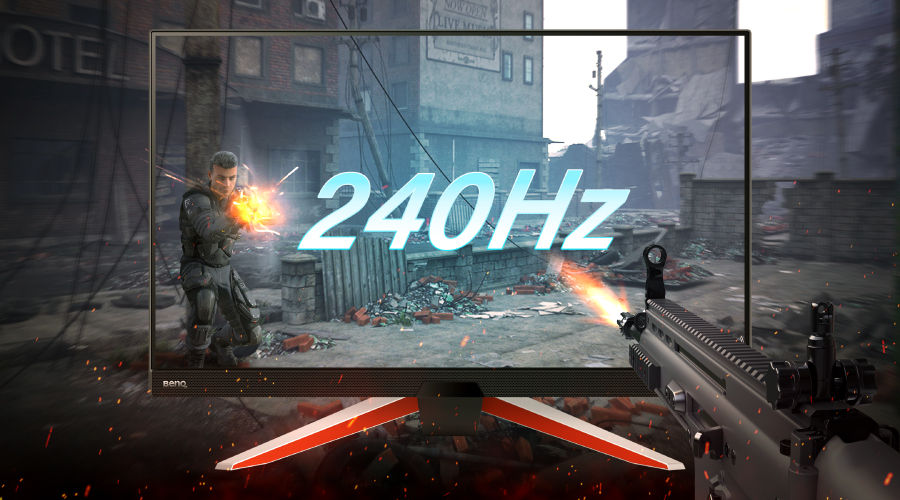
Introduction
In the realm of gaming and high-performance displays, the choice between 240Hz vs 144Hz has become a pivotal decision for enthusiasts and competitive gamers alike. Let’s delve into the intricacies of this clash to decipher which refresh rate emerges victorious.
Decoding the Jargon: 144Hz vs 240Hz
Unveiling the Basics
Before we plunge into the depths of comparison, let’s establish a foundational understanding. The terms “144hz vs 240hz ” refer to the monitor’s refresh rate 144 Hz vs 240, measured in hertz. A higher refresh rate implies more frames per second (FPS), crucial in the gaming domain.
144Hz: The Gold Standard
Often deemed the gold standard, 240Hz vs 144Hz has long been the go-to for gamers seeking a balance between performance and affordability. The display refreshes 144 Hz vs 240 times per second, delivering smoother visuals than the conventional 60Hz monitors.
240Hz: The Performance Overdrive
Stepping up the game, the 144hz vs 240hz monitors aim to elevate the gaming experience by refreshing at a staggering 240 times per second. The primary promise? A significant reduction in motion blur and input lag, fostering a more responsive and immersive gaming environment.
Head-to-Head Showdown: 144Hz vs 240Hz
Fluidity in Motion: A Visual Feast
At the core of the debate lies the fluidity of motion. In fast-paced games, the difference between 144Hz and 240Hz becomes palpable. The latter offers a more seamless and responsive experience 144 vs 240hz, especially when navigating intense, action-packed scenes.
Input Lag: The Crucial Metric
For competitive gamers, input lag is a deal-breaker. Here, the 144hz vs 240hz display excels, providing a near-instantaneous response to user inputs. This can be a game-changer in competitive scenarios, where split-second decisions can tip the scales.
Demystifying Pixel Perfection
While both refresh rates offer impressive visuals, the 240Hz display takes a leap towards pixel perfection. It minimizes motion artifacts, enhancing image clarity and reducing the notorious ghosting effect witnessed on lower refresh rate monitors.
Is 240Hz Better than 144Hz?
As gaming enthusiasts navigate the maze of monitor choices, a recurring question echoes: “Is 240Hz better than 144Hz?” This query serves as the linchpin in the decision-making process, prompting users to scrutinize the nuances that differentiate these refresh rates. Beyond the numerical disparity lies a realm of gaming experience, responsiveness, and visual clarity that sets the stage for a comprehensive comparison. Let’s unravel the intricacies to unravel the answer to this pivotal question.
Tailoring to Preferences
The answer isn’t a one-size-fits-all solution. Whether 240Hz is superior to 144Hz depends on individual preferences, gaming genres, and the level of competitiveness. Casual gamers might find the 144Hz sweet spot, while esports aficionados lean towards the extra edge granted by 240Hz.
The Esports Arena Verdict
In the esports arena, where milliseconds can determine victory, the 144 Hz vs 240 display gains prominence. Titles demanding rapid reflexes, like first-person shooters, benefit immensely from the heightened responsiveness, offering players a competitive advantage.
The Difference Between 144Hz and 240Hz: Beyond Numbers
In the dynamic realm of display technology, the perennial debate rages on—144 Hz vs 240 Hz. This clash of refresh rates, each vying for supremacy, is at the forefront of discussions among gamers and tech enthusiasts. The crux of the matter lies in dissecting the nuanced differences between 144 Hz vs 240 Hz, understanding how these numbers translate into tangible gaming experiences. So, let’s embark on this journey to unravel the intricacies of 144 Hz vs 240 Hz, exploring the advantages, drawbacks, and the impact these refresh rates wield on the gaming landscape.
When considering the difference between 144Hz and 240Hz, one must focus on the tangible disparities in performance that these refresh rates offer. The most noticeable distinction lies in the fluidity of motion during gaming. At 240Hz, the transition between frames is notably smoother, contributing to a heightened sense of immersion. This disparity becomes particularly apparent in fast-paced games where split-second reactions matter. The difference between 144Hz and 240Hz becomes a defining factor, creating a visual experience that transcends the limitations of lower refresh rates.
Price Point Considerations
Beyond performance disparities, the wallet also plays a role. 144 vs 240hz monitors often come with a higher price tag, prompting users to weigh the performance benefits against their budget constraints. A cost-benefit analysis becomes essential.
Hardware Prerequisites
Embracing a 240Hz display necessitates a robust hardware setup. A powerful graphics card and a potent CPU are prerequisites to harness the full potential of the higher refresh rate. Users must factor in these additional requirements when making the leap.
Conclusion
In the 240Hz vs 144Hz showdown, the victor depends on the user’s priorities. While 240Hz brings unparalleled responsiveness and clarity, 144 vs 240hz stands as a reliable and cost-effective choice. The decision ultimately rests on personal preferences, gaming habits, and the willingness to invest in top-tier performance.
Embarking on this journey, understanding the nuances of 240Hz vs 144Hz, empowers users to make an informed decision. So, 144 Hz vs 240 whether you choose the steadfast 144 vs 240hz or opt for the performance overdrive of 240Hz, rest assured that the gaming experience is set to be nothing short of extraordinary.


